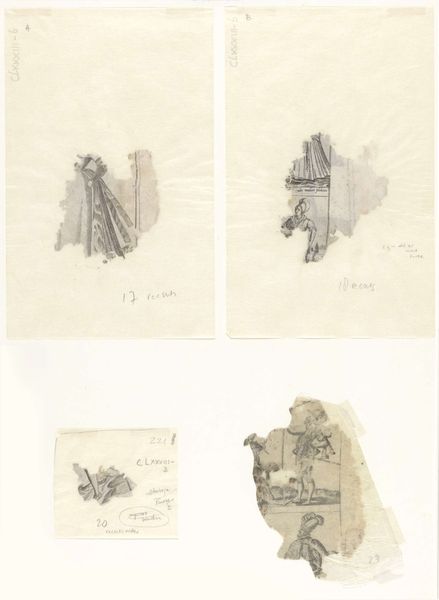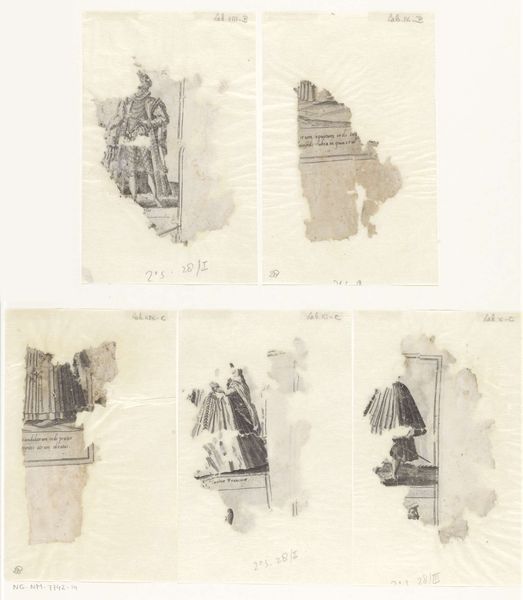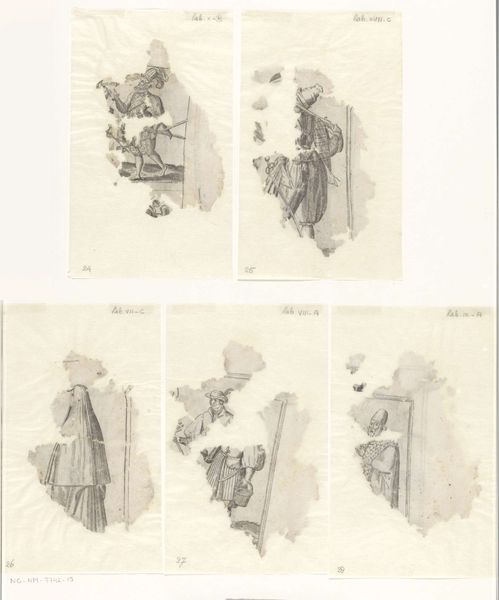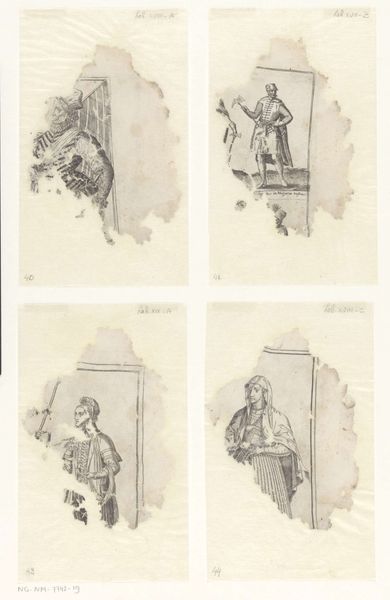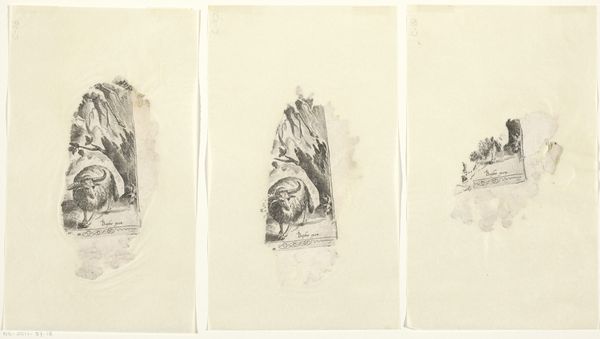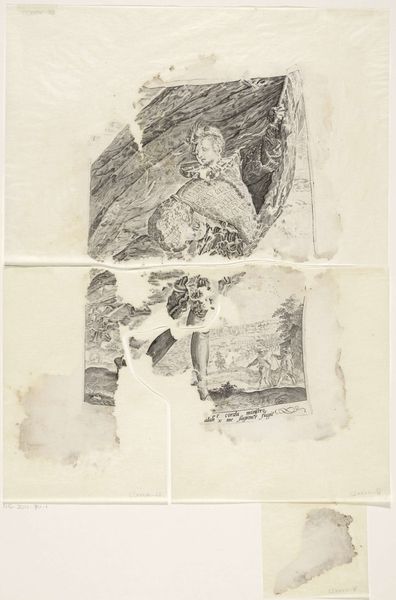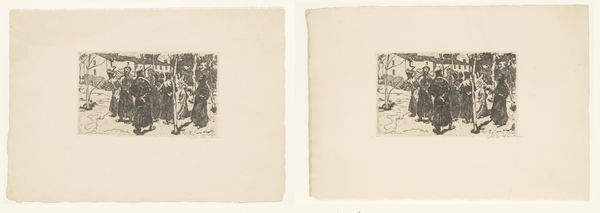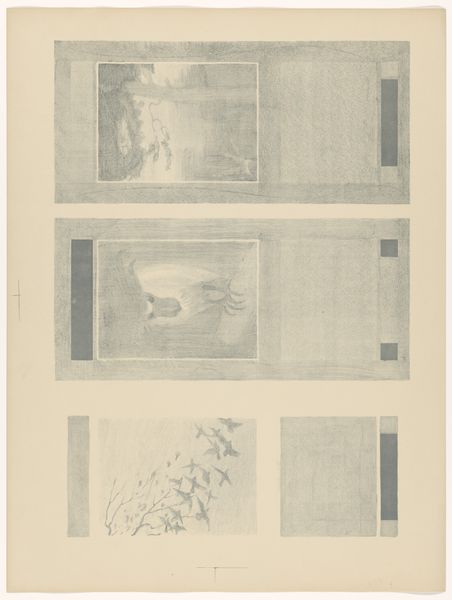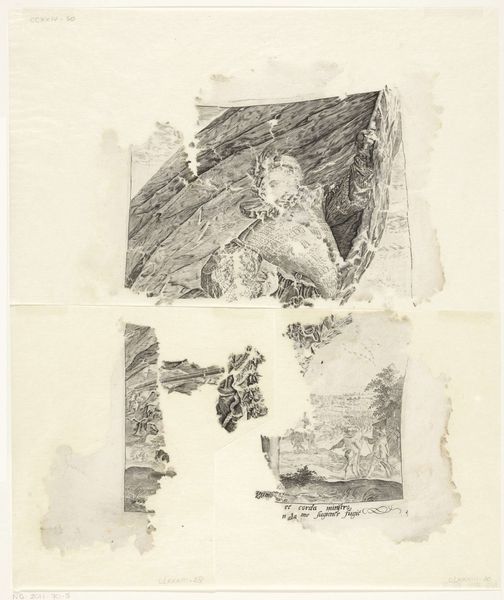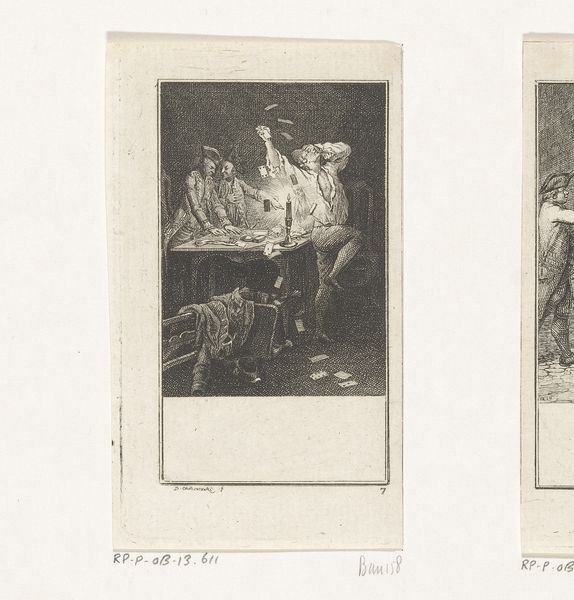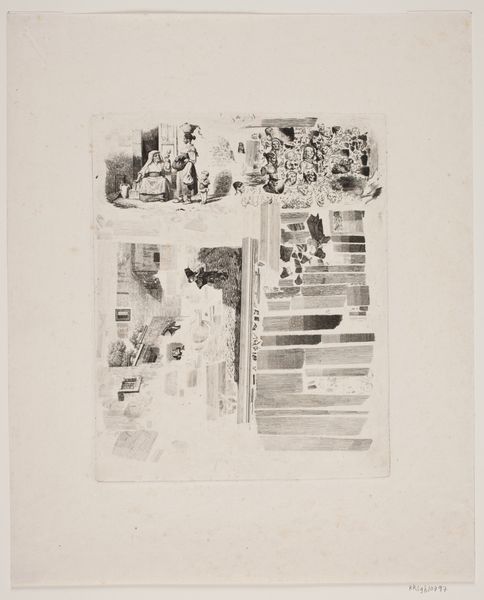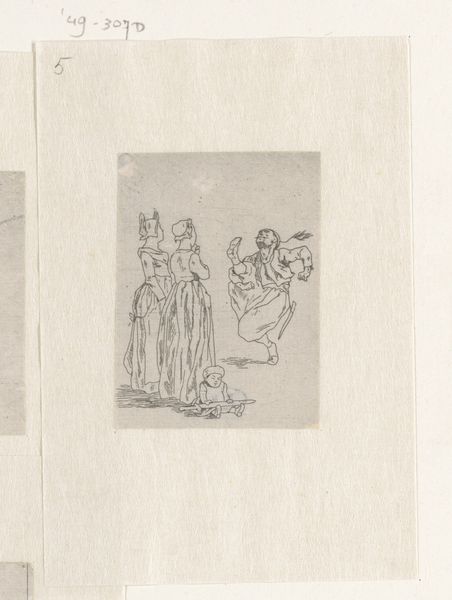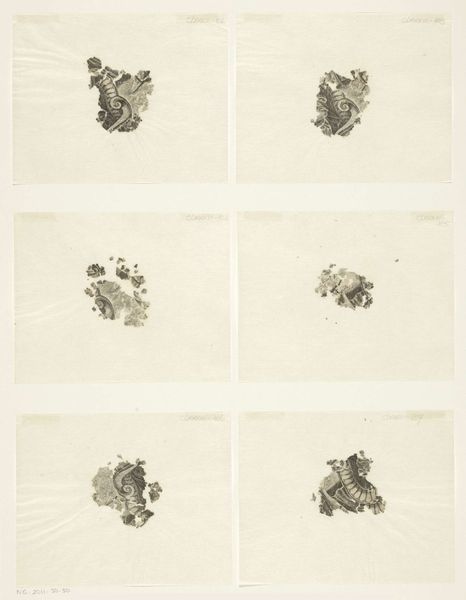
Fragmenten van prenten met wereldlijke en geestelijke klederdrachten 1581 - 1596
0:00
0:00
abrahamdebruyn
Rijksmuseum
drawing, print, paper, pencil, engraving
#
portrait
#
drawing
# print
#
pencil sketch
#
figuration
#
paper
#
11_renaissance
#
pencil
#
history-painting
#
engraving
Dimensions: height 170 mm, width 135 mm
Copyright: Rijks Museum: Open Domain
Curator: These captivating fragments before us, "Fragmenten van prenten met wereldlijke en geestelijke klederdrachten," originate from the period between 1581 and 1596. They’re attributed to Abraham de Bruyn, an artist whose work provides fascinating glimpses into the clothing of the era. Editor: Wow, looking at these delicate remnants, I’m struck by their almost ghostly quality. The images are faint, torn around the edges, like whispers from another time. Curator: Exactly! De Bruyn employed engraving, pencil, and paper in this series. I love how the technique yields such meticulous detail and contrasts beautifully with the raw state of the paper itself, hinting at the passage of centuries and how meaning shifts in a physical work over time. Editor: The act of engraving is such a forceful process on a delicate medium, so different from simply applying graphite, or watercolour; the marks almost aggressively score the plate. These are so visibly labor-intensive, and now fragmented beyond their intended function. What were they used for initially? Curator: These weren't originally conceived as artworks in themselves, but rather served as pattern books for garment makers and tailors. These fragments provide visual insights into historical fashion, as we can infer information about material conditions that supported clothing production and consumption back then. Editor: So, almost like an early form of mass media dictating trends! The way clothing signifies power and piety here feels so immediate, doesn't it? You can imagine workshops full of artisans interpreting these images to create tangible articles of status, wealth or devotion. What stories these clothes could tell... Curator: I see these fragments also as a mirror to our own fractured existence, or to what's been discarded in plain sight: The broken edges, the faded lines… Aren’t they gorgeous though, especially as it challenges our concept of completion and wholeness? Editor: They absolutely invite reflection. To me, the raw edges, the material presence of the paper itself – those whisper to me of time's relentless touch and give as much meaning as what is engraved or sketched. They also call into question value in their ruined state as opposed to what a mint condition item would mean to economic considerations. Curator: Right? We're left contemplating how art persists, even in fragments. What endures beyond utility? And whether we're complete even in imperfection. Editor: Indeed. I will definitely leave feeling like the scraps, process, and social contexts give deeper and richer information than if I saw this perfectly restored or recontextualized without historical awareness.
Comments
No comments
Be the first to comment and join the conversation on the ultimate creative platform.
